Evie Hone HRHA (1894-1955) Composition Oil on canvas, 84 x 105.5cm (33 x 41½'') Provenance: Sale, de Vere's, Dublin 15/06/2010, lot 15 Every day, Evie Hone’s work is viewed by the pupils of Eton College. In 1948 Hone won the international competition to design a replacement of the huge east window in Eton College Chapel which had been destroyed in the war. In a masterwork of deep colours, Hone depicted the Crucifixion and the Last Supper and it was, according to Anne Crookshank, ‘one of the most exciting commissions of the period in these islands’. And Hone’s stained glass window My Four Green Fields, exhibited at New York’s World Fair in 1939, now illuminates the main staircase in Government Buildings. Eva Sydney Hone was born in Dublin on 22 April 1894 and belongs, in Nicole Arnould’s words, to ‘the Hone family which has provided Ireland with a number of gifted artists [Nathaniel Hone and Nathaniel Hone the Younger] over the centuries’. Tate Britain cites Evie Hone as ‘an outstanding religious painter of modern Ireland and a stained glass artist of international stature’ and her watercolours, oils and gouaches complement the windows she designed for Catholic and Protestant churches and secular institutions throughout the country. Having contracted polio as a child, Hone suffered ill-health throughout her life but she was determined to be an artist. She studied at the Byam Shaw School of Art, an independent art school in London, at Westminster School of Art and was also instructed by Walter Sickert. She worked with Bernard Meninsky who advised her to go to Paris where she and fellow-artist Mainie Jellett, in the early 1920s, were taught by André Lhote a Cubist, and, later, she worked with Albert Gleizes whom Jellett described as ‘the leader of the most severe type of abstract work without any realistic basis’. Gleizes showed Hone and Jellett what he termed ‘the substantial, rational explainable method of building up a picture without having recourse to representation’. Deeply spiritual, Hone, in 1925, when she was thirty-one, entered an Anglican convent in Truro, Cornwall and spent two years there. Following her time in the convent, Hone converted to Roman Catholicism but returned to painting in early 1928 and in 1931 Hone joined An Túr Gloine [The Tower of Glass] a stained-glass artists’ co-operative, which Sarah Purser had founded in 1903. Hone began concentrating on making stained glass from 1933 and in Marley, in the 1940s, following the closure of An Túr Gloine, Hone set up her stained glass workshop. When Abstraction-Création, was founded by eight artists in Paris, in 1931, to mark non-figurative art, Hone was invited to contribute and write a manifesto. Hone wrote to Gleizes and Bruce Arnold sums up Hone’s manifesto with its three objectives as follows: ‘The first is the satisfaction of the artist’s sense of beauty through colour and form used in harmony and deriving life and rhythm from the painting itself. The second is the justification of the artist’s spiritual nature through an entirely new dependence – on form, on rhythm, on colour. The third was an approach to truth which she related to Irish roots in Celtic art, the abstract motivation of which she saw as a purifying condition.’ These ideas find expression in Evie Hone’s Composition. Though undated there is no doubting that this oil on canvas is a major work of pure form and colour. Within the frame, Hone has outlined her own frame in dark green, deep ochre, black. Within this rectangular shape the work is alive with a dynamic harmonious energy and, as its title suggests, Composition celebrates what Hone identifies as colour and form in what is both a circular and asymmetrical structure. According to Brian Fallon, Hone, ‘courageous and independent-minded’ is ‘gifted with energy’ and that energy is seen here in the circular motion, the assured command and choice of colour, in that delicate, squiggly, playful line lower-right. This painitng would make a brillia
Evie Hone HRHA (1894-1955) Composition Oil on canvas, 84 x 105.5cm (33 x 41½'') Provenance: Sale, de Vere's, Dublin 15/06/2010, lot 15 Every day, Evie Hone’s work is viewed by the pupils of Eton College. In 1948 Hone won the international competition to design a replacement of the huge east window in Eton College Chapel which had been destroyed in the war. In a masterwork of deep colours, Hone depicted the Crucifixion and the Last Supper and it was, according to Anne Crookshank, ‘one of the most exciting commissions of the period in these islands’. And Hone’s stained glass window My Four Green Fields, exhibited at New York’s World Fair in 1939, now illuminates the main staircase in Government Buildings. Eva Sydney Hone was born in Dublin on 22 April 1894 and belongs, in Nicole Arnould’s words, to ‘the Hone family which has provided Ireland with a number of gifted artists [Nathaniel Hone and Nathaniel Hone the Younger] over the centuries’. Tate Britain cites Evie Hone as ‘an outstanding religious painter of modern Ireland and a stained glass artist of international stature’ and her watercolours, oils and gouaches complement the windows she designed for Catholic and Protestant churches and secular institutions throughout the country. Having contracted polio as a child, Hone suffered ill-health throughout her life but she was determined to be an artist. She studied at the Byam Shaw School of Art, an independent art school in London, at Westminster School of Art and was also instructed by Walter Sickert. She worked with Bernard Meninsky who advised her to go to Paris where she and fellow-artist Mainie Jellett, in the early 1920s, were taught by André Lhote a Cubist, and, later, she worked with Albert Gleizes whom Jellett described as ‘the leader of the most severe type of abstract work without any realistic basis’. Gleizes showed Hone and Jellett what he termed ‘the substantial, rational explainable method of building up a picture without having recourse to representation’. Deeply spiritual, Hone, in 1925, when she was thirty-one, entered an Anglican convent in Truro, Cornwall and spent two years there. Following her time in the convent, Hone converted to Roman Catholicism but returned to painting in early 1928 and in 1931 Hone joined An Túr Gloine [The Tower of Glass] a stained-glass artists’ co-operative, which Sarah Purser had founded in 1903. Hone began concentrating on making stained glass from 1933 and in Marley, in the 1940s, following the closure of An Túr Gloine, Hone set up her stained glass workshop. When Abstraction-Création, was founded by eight artists in Paris, in 1931, to mark non-figurative art, Hone was invited to contribute and write a manifesto. Hone wrote to Gleizes and Bruce Arnold sums up Hone’s manifesto with its three objectives as follows: ‘The first is the satisfaction of the artist’s sense of beauty through colour and form used in harmony and deriving life and rhythm from the painting itself. The second is the justification of the artist’s spiritual nature through an entirely new dependence – on form, on rhythm, on colour. The third was an approach to truth which she related to Irish roots in Celtic art, the abstract motivation of which she saw as a purifying condition.’ These ideas find expression in Evie Hone’s Composition. Though undated there is no doubting that this oil on canvas is a major work of pure form and colour. Within the frame, Hone has outlined her own frame in dark green, deep ochre, black. Within this rectangular shape the work is alive with a dynamic harmonious energy and, as its title suggests, Composition celebrates what Hone identifies as colour and form in what is both a circular and asymmetrical structure. According to Brian Fallon, Hone, ‘courageous and independent-minded’ is ‘gifted with energy’ and that energy is seen here in the circular motion, the assured command and choice of colour, in that delicate, squiggly, playful line lower-right. This painitng would make a brillia

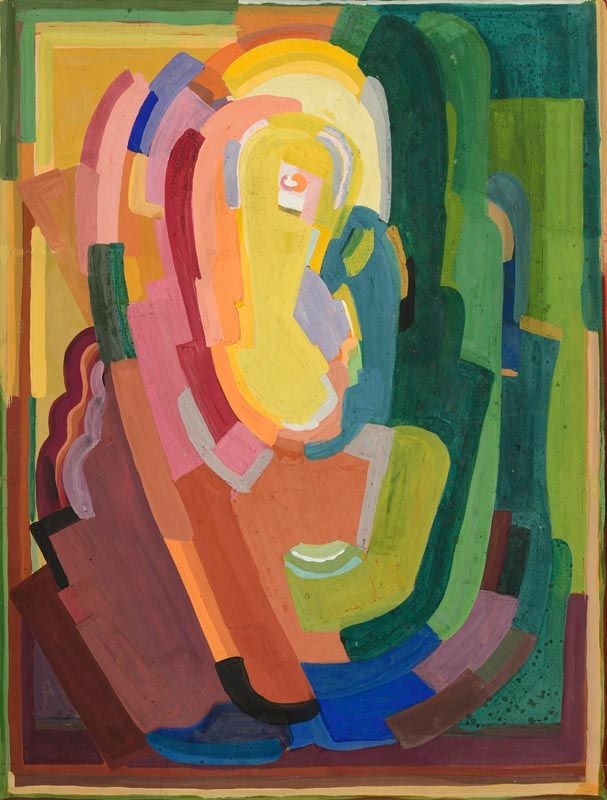
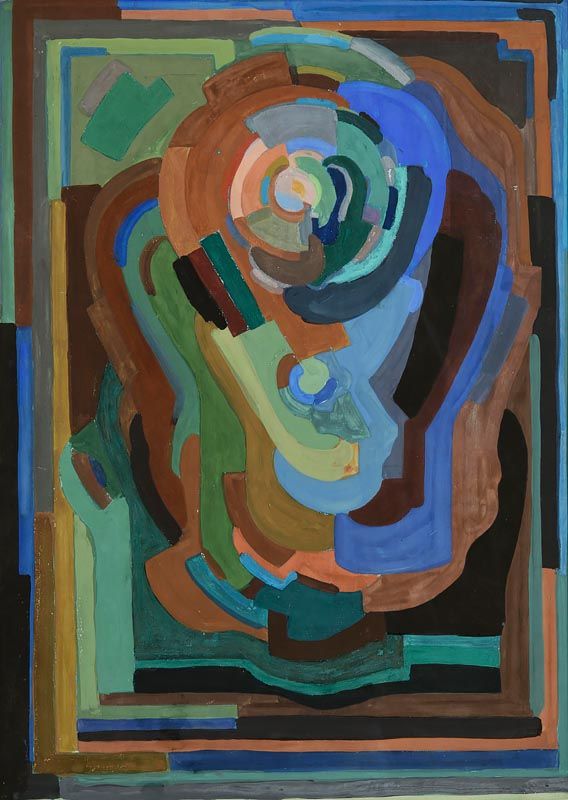
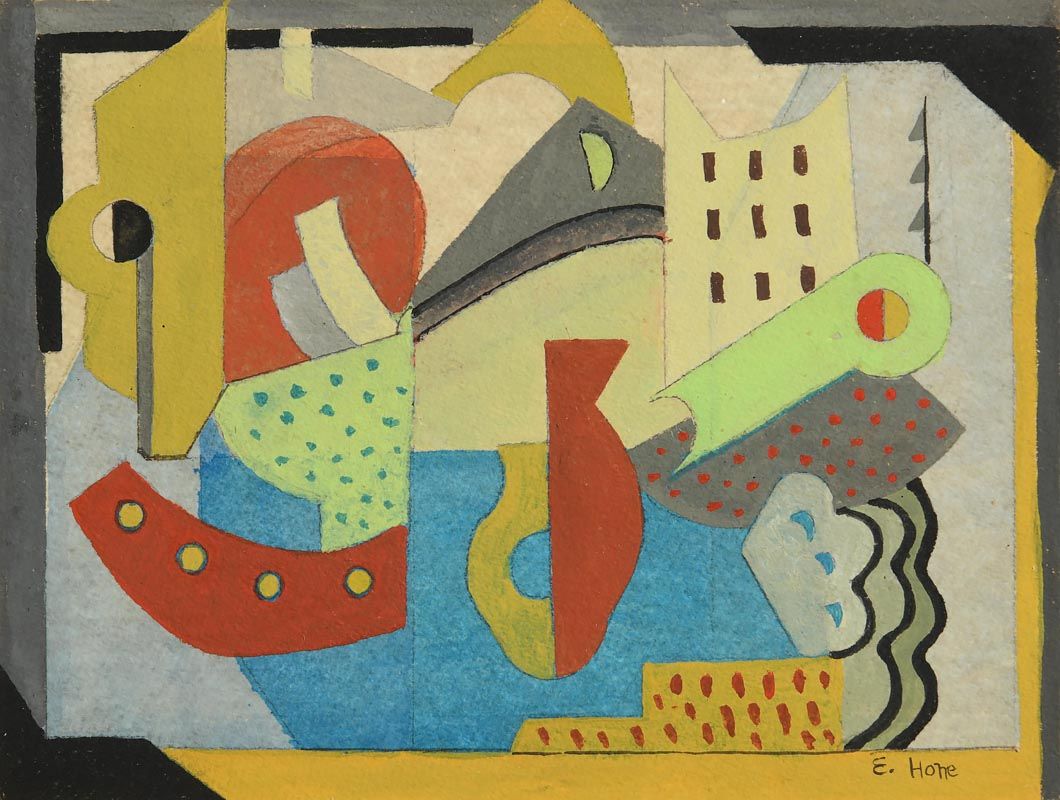
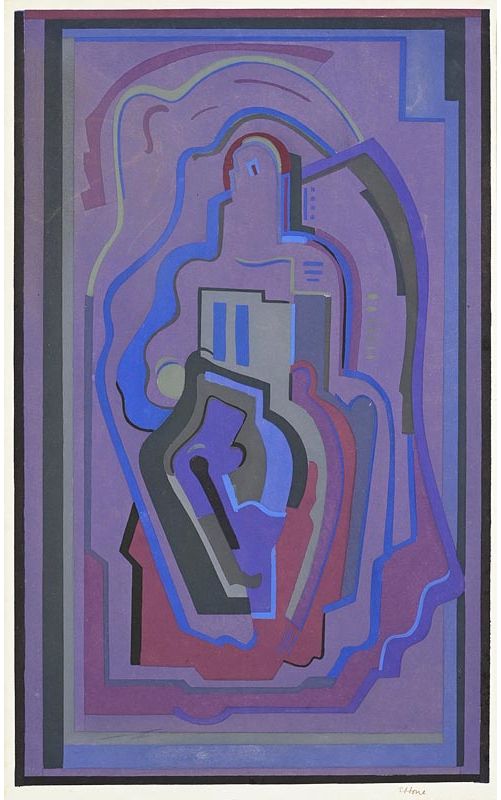
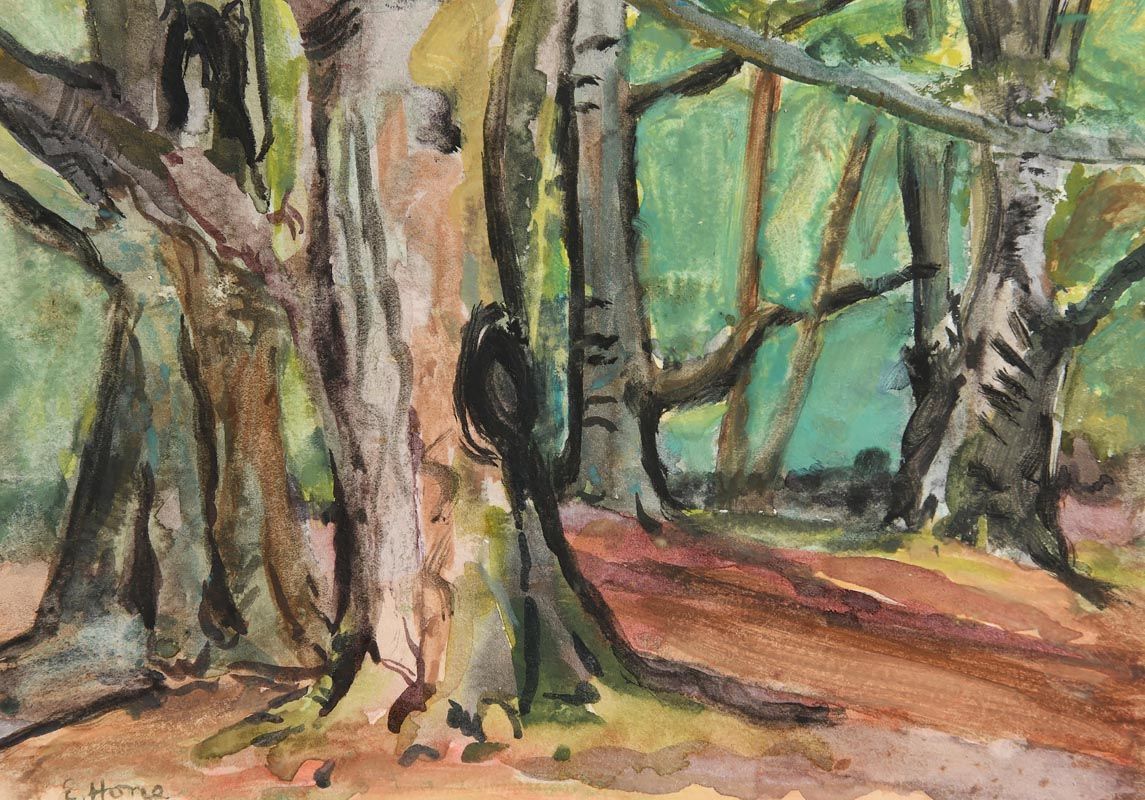
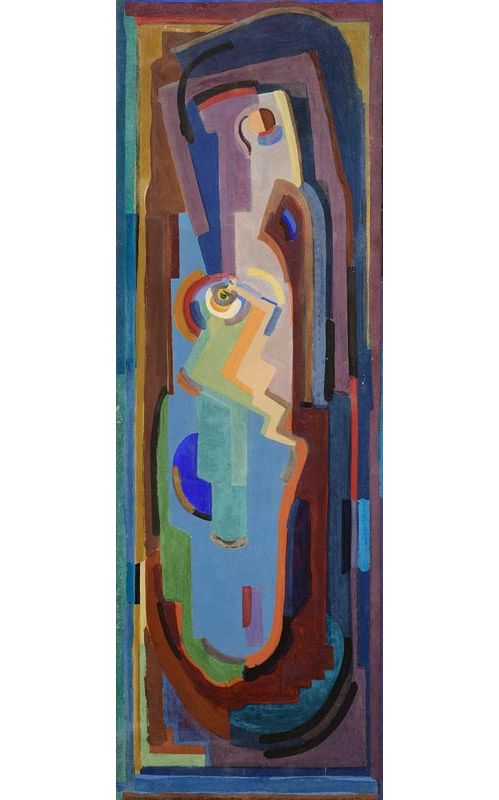
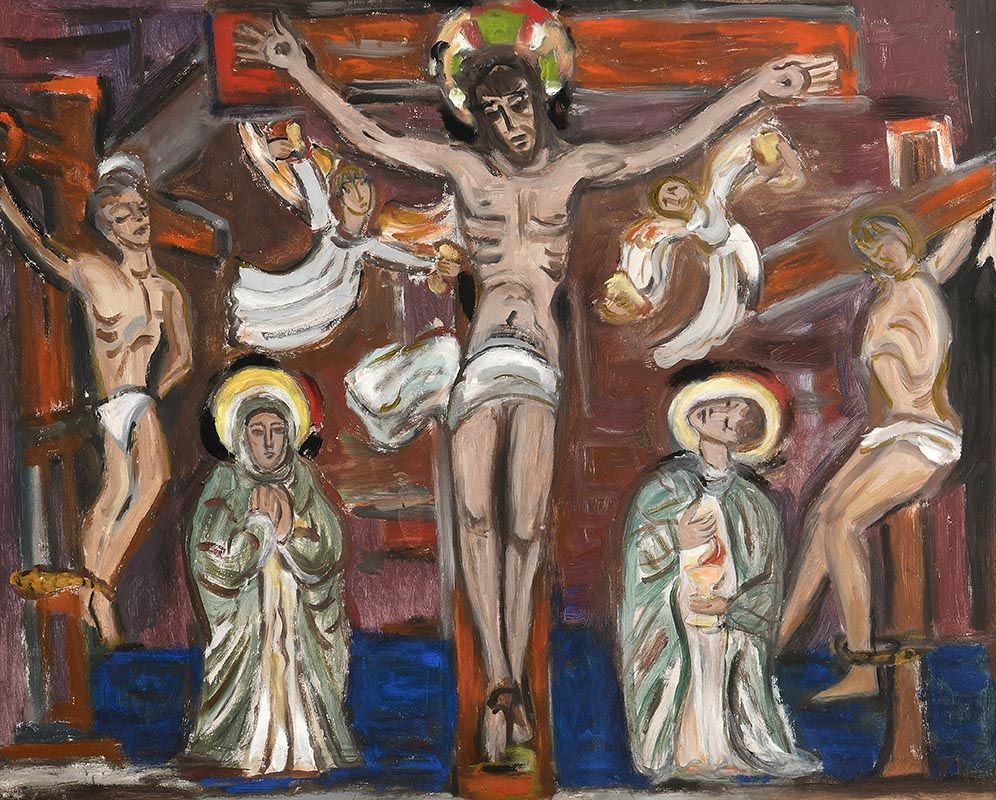
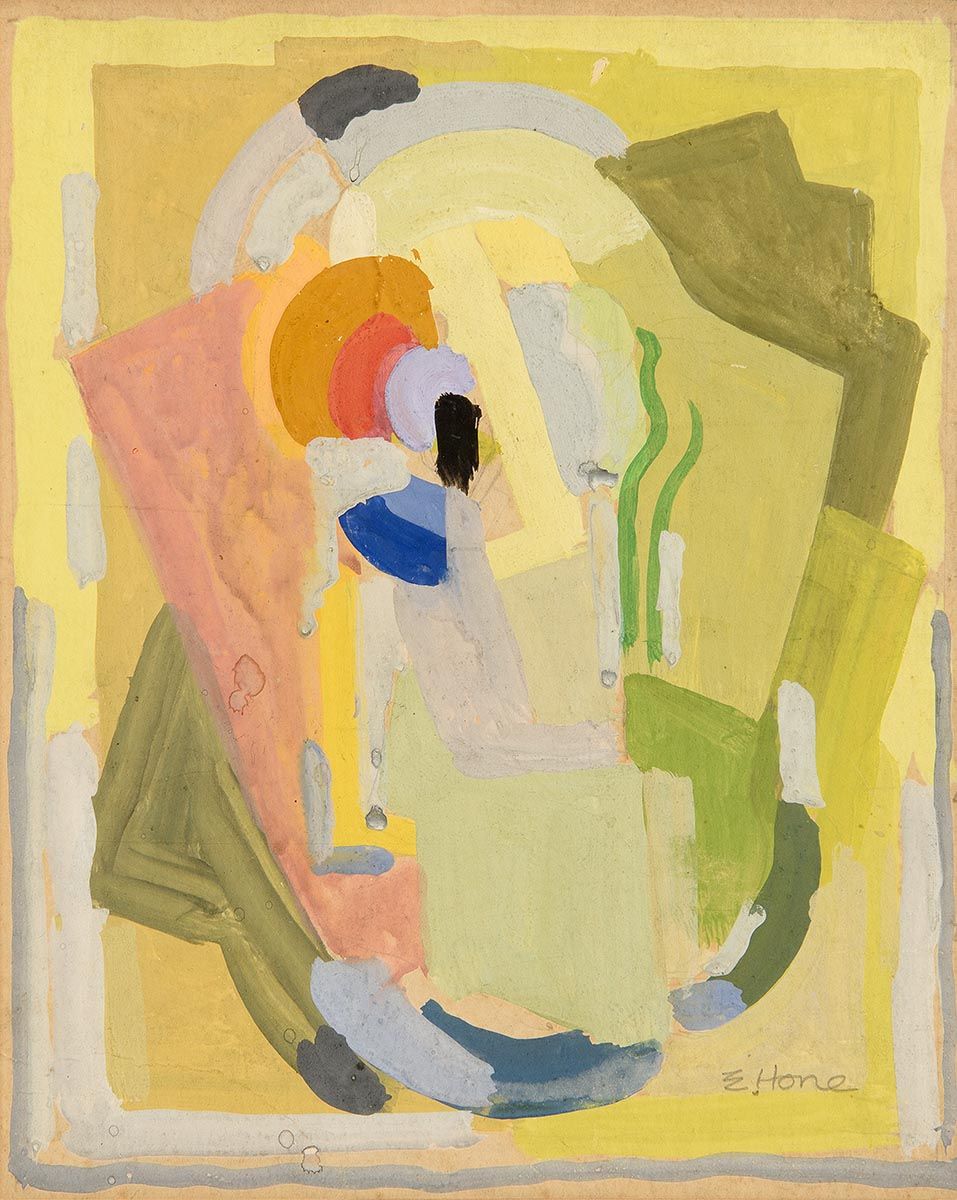
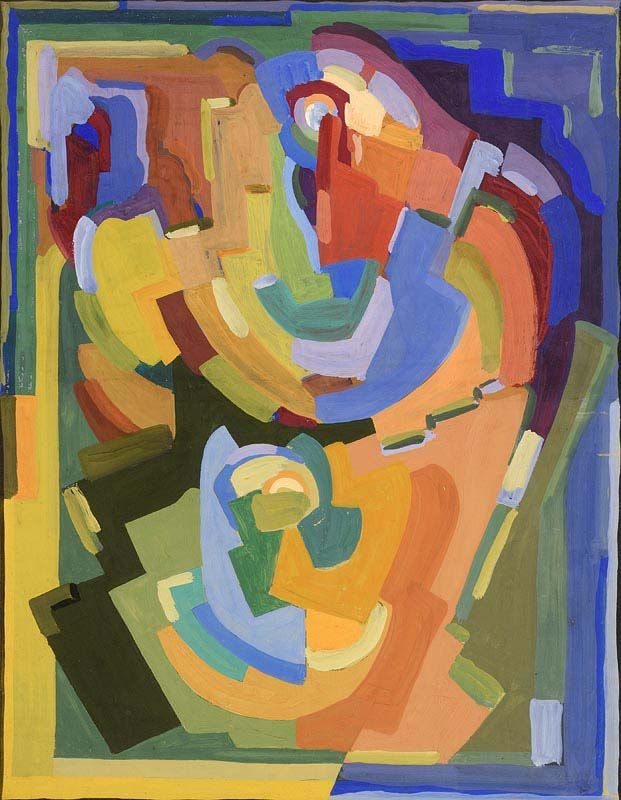
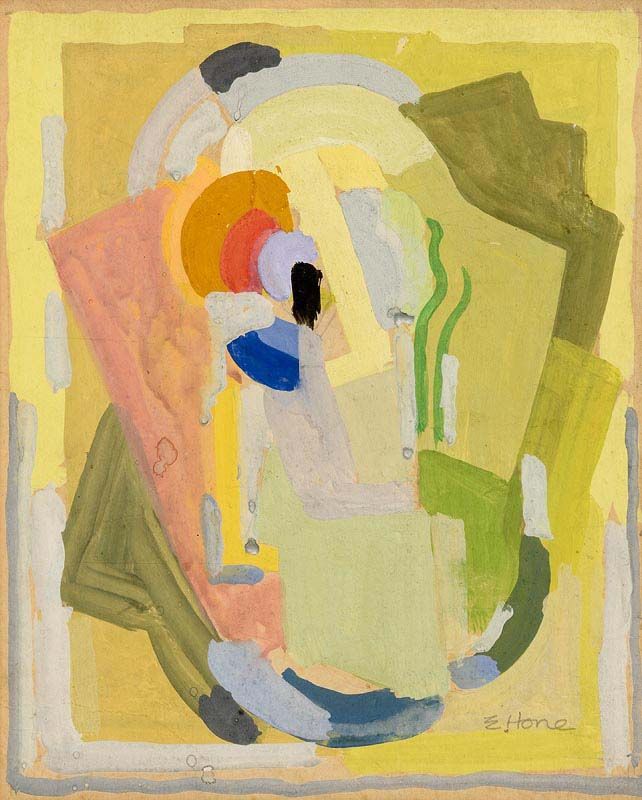




Try LotSearch and its premium features for 7 days - without any costs!
Be notified automatically about new items in upcoming auctions.
Create an alert